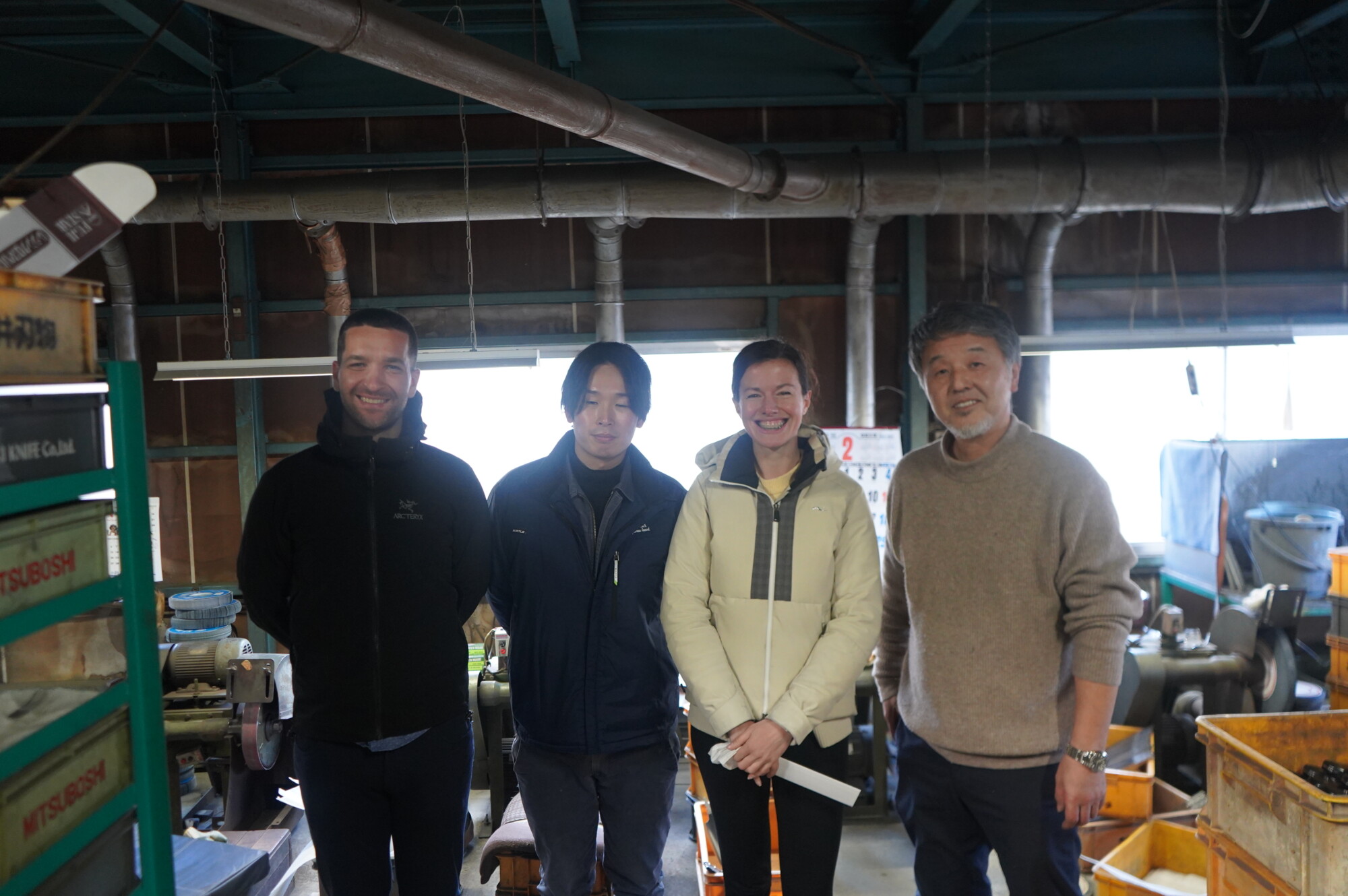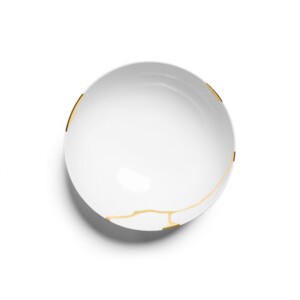So, you’ve decided to upgrade your kitchenware, moved to a new house, or perhaps you’ve heard that Japanese knives make the perfect, personal gift? You’re in for a treat! Japanese knives are not just tools; they’re a gateway to a world of culinary craftsmanship, precision, and tradition. Whether you’re a passionate home cook, an adventurous chef, or someone who simply appreciates finer things in life, understanding the nuances of Japanese knives can boost your cooking experience to a whole new level.
In this comprehensive guide, we’ll help you spot the real Japanese knives deal from deceptive knock-offs. From the intricacies of authenticity to the vast landscape of the Japanese knife market, we’ll equip you with the knowledge and insights you need to make informed choices and celebrate the art of cooking. Whether you’re in search of the perfect knife for your kitchen or looking to gift someone a slice of culinary excellence, this guide is for you. So, sharpen your senses and prepare to explore the world of Japanese knives, where every slice tells a story, and every meal becomes a masterpiece.
Why should you listen to us?
We intend on giving you an overall perspective of the Japanese knife market, which uses our years of experience and expertise to cut through (pun intended) the marketing of misleading and deceptive brands that play off the reputation of Japanese knives. Throughout this article you’ll obviously see featured knives that are of our own, but this is just to give you a better idea of what you should look for in a Japanese made knife – and we’ll give you other knife makers recommendations where possible.
Knife is just a knife, right?
If you’re exploring this, you’re likely already aware of the unparalleled excellence of Japanese knives and contemplating the prospect of owning one. While a knife may seem like a simple tool at first glance, the realm of Japanese knives unveils a level of sophistication that sets them apart as superior culinary instruments.At its core, a Japanese knife transcends the conventional notion of a mere sharp edge; it stands as a testament to the artistry of metallurgical craftsmanship. The meticulous selection of steel, the precision of the grind, and the intricacies of edge geometry coalesce in a harmonious dance, dictating not only sharpness but also enduring resilience. This distinction becomes apparent in the kitchen, where a Japanese knife effortlessly executes precise slices compared to the culinary challenges posed by other types.
Yet, the significance extends beyond the blade itself. The handle, far from a mere companion, plays a pivotal role in this culinary symphony. Engineered for optimal comfort and control, the choice of handle material, shape, and weight distribution transforms the knife into a seamless extension of your hand. The realm of innovation in this regard takes captivating forms, such as the use of extraordinary materials like stabilised bog oak, some pieces of which boast an astonishing age of 2500 years. This not only imparts a distinctive touch to the grip but also weaves the knife into a tapestry of rich historical connections.
Enter the tang, the concealed hero that extends from the blade into the handle. Whether it’s a full tang offering robust balance or a discreet tang reducing weight, this element profoundly influences the tactile experience of the knife in your hand. The tang serves as the unheralded link between the blade and the handle, determining the overall strength and stability of the knife.
The complexity of Japanese knives doesn’t conclude there; it extends to the bolts and rivets that secure the handle. These components transcend mere functionality; they serve as aesthetic embellishments, infusing a touch of style into the overall masterpiece. In the world of knives, the superiority of Japanese craftsmanship shines through in every nuanced detail, making them an unrivalled choice for those who seek the pinnacle of culinary precision and elegance.

What constitutes a Japanese knife brand
- Japanese owned company/individual(s) that manufactures or produces their products in Japan, either all parts of a knife or just the blade. In fact, many Japanese blacksmiths import handles from other countries, as certain material e.g. exotic wood is not available in Japan.
In our case, Sakai Kyuba blades are fully handmade in Japan in the outskirts of Osaka, however, their handles are crafted by craftsmen in Europe (wood comes from Poland or Italy) to elevate the overall beauty of the knife. Due to geolocation exclusivity reasons, the blacksmith’s real name couldn’t be included in our knives. We weren’t willing to let go of his outstanding artistry that easily, so together with him, we created knives under our dedicated brand name “Sakai Kyuba 堺久馬”. Does it make our knives any less Japanese? Our customers think it makes them even more unique 🙂 It’s true, no one knife is the same, as the patterns differ from one knife to another (the beauty of handmade things 🙂 - We don’t label a brand as Japanese just because it produces Japanese-style knives like a deba (pointed carving knife) or a santoku (“three uses”). Nevertheless, you may come across misleadingly promoted brands on review websites and “best of” lists using this standard. It’s akin to claiming that owning a Toyota Prius qualifies as driving a high-end electric car because it shares a design profile with a Tesla Model S.

Why does it matter if a knife is Japanese?
The significance of a knife being Japanese extends beyond mere nomenclature; it delves into the realms of craftsmanship, heritage, and authenticity. When perusing a “knife review” website or evaluating products from various manufacturers, the claim of being Japanese can be a crucial factor. Some companies strategically leverage the allure of Japanese craftsmanship by incorporating keywords like “Japanese” in their marketing, employing names such as “Wasabi,” “Shogun,” or “Kamekoto.” This linguistic manipulation is intended to create the illusion of an authentic Japanese product.
1. Cultural Appropriation in Branding: The use of Japanese-themed names and the strategic inclusion of the term “Japanese” in marketing copy can mislead consumers. This cultural appropriation undermines the authenticity of the product and deceives buyers into thinking they are investing in a knife with genuine Japanese roots.
2. Justified Price Points: Authentic Japanese knives often command higher prices due to the unparalleled artistry involved in their creation. These knives are the result of meticulous craftsmanship, with blacksmiths drawing upon decades of experience and a deep understanding of metallurgy. The elevated price reflects the dedication to perfection and the mastery of the blacksmith’s trade.
3. Deceptive Practices and Price Inflation: Some deceitful brands, often of Chinese origin, exploit the mystique associated with Japanese knives. By falsely positioning their products as Japanese, they artificially inflate the prices, preying on consumers who believe they are investing in the craftsmanship and quality synonymous with genuine Japanese knives.
4. Heritage and Legacy: Authentic Japanese knives carry the legacy of centuries-old craftsmanship, passed down through generations. This heritage contributes to the uniqueness of each blade, making them not just kitchen tools but cultural artefacts with a story to tell.
5. The Essence of Japanese Knives: Owning a true Japanese knife is not just about having a cutting tool; it’s about embracing a tradition that values precision, respect for materials, and a connection to culinary heritage. The deceptive marketing by some brands dilutes this essence and diminishes the genuine appreciation for Japanese knife craftsmanship.
Discerning consumers should be wary of deceptive practices that exploit the allure of Japanese knives, recognising that the true value lies not just in the name but in the centuries-old expertise that goes into crafting each blade.
Basic traits of Japanese knives:
- Hocho/Bocho: The term “Hocho” or “Bocho” translates to “kitchen knife” in Japanese, encapsulating the essence of these culinary tools.
- Diverse Producers – From Artisans to Giants:
- Japanese knives are crafted by a spectrum of producers, ranging from small, artisanal forges to massive manufacturers like Shun, a century-old brand under KAI.
- Notable brands include Global, a family-owned enterprise with knives favoured by culinary maestro Anthony Bourdain, who swore by the Global G-2 eight-inch knife.
- Rich History and Legacy: The tradition of Japanese knife-making dates back over 800 years, with regions boasting a lineage of swordsmiths. Under the Sakai Kyuba 堺久馬 brand lies the artistry of one of the most famous blade masters in Sakai (Osaka Prefecture), Japan, drawing from over 600 years old blacksmithing tradition.
- Single vs. Double-Bevel: Japanese knives predominantly feature single-bevel (kataba) blades, demanding skill for proper use. However, there are exceptions, such as double-bevel blades found in sujihiki, gyuto, santoku, and nakiri knives.
- Wa-Bocho Categories – Honyaki and Kasumi:
- Honyaki Excellence: Representing the pinnacle, Honyaki knives are single-material, often forged from high carbon steel.
- Kasumi Craftsmanship: Kasumi grade knives showcase a fusion of two layers of metal, typically comprising high-carbon steel with an iron spine.
- Heft vs. Precision – A Delicate Balance: In contrast to the robust build of German knives, Japanese blades are characterised by a thinner and lighter profile, enabling a sharper cutting edge.
Types of steel and brands used by Japanese knife makers
In addition to the diverse production methods, the type and quality of Japanese steel used by Japanese bladesmiths are partially what distinguishes Japanese knives from all others.Apart from the Japanese knife styles, the Japanese steels used by knife makers are globally recognised for their quality. These regional blacksmiths, with over 800 years of experience, contribute immensely to the craft.
Some Japanese knife makers, like Misono, have also chosen to utilise high-quality carbon steels from Sweden. The steels used are not exclusively Japanese, and some producers, such as Misono, have sought out and utilised Swedish Stainless Steel for their line of products.
The top Japanese knife makers use proprietary steel (CROMOVA 18 by Yoshikin) or steel from these leading Japanese steel producers, such as Aichi Steel Corp, Hitachi Metals Ltd., Kobe Steel, Ltd/Kobelco, and Takefu Special Steel Co. Ltd.
The types of steels used (the spectrum) by Japanese bladesmiths: on one end is stainless steel with chromium added for corrosion resistance (to prevent rusting). On the other end are high carbon knives, which are prone to rust but are very hard, super sharp, and have longer-lasting edge retention.
Here are a few of the Japanese steels used by Japanese knife makers: SLD (by Hitachi), VG-1, VG-10 (by Takefu. – which is used in our Seki Kyuba knives), AUS-10 (Sakai Kyuba), ACUTO440 (Aichi), Shirogami 1/2/3 and Aogami 1/2 (White and Blue steel by Hitachi), ZDP-189 (also by Hitachi), R2/SG2 (Seki Kyuba Pro), a Japanese super steel made of powder metallurgy (Kobelco).


A few most popular styles of Japanese knives
Here are some of the most sought-after styles, conveniently linked to the leading sellers through the most prominent online retailers;
Gyuto: Japanese chef’s knife for general use such as chopping and slicing. Gyutos are usually double-bevel (can be used by left/right-handed users – especially when the handle is octagonal or oval) chef’s knife.

Santoku:As adaptable as the Gyuto but with a shorter length, the santoku is also double-beveled, making it excellent for slicing, chopping, and dicing meat, fish, and vegetables—often referred to as the “three virtues.”

Nakiri/Usuba: resembling a cleaver yet distinct in its function, the Usuba is a double-beveled knife designed for chopping vegetables, harking back to a time when Japan embraced a vegetarian diet for 1,200 years. The Usuba is a variation of the Nakiri, distinguished by its thin, usually single-beveled blade, maintaining a striking resemblance to the Nakiri in appearance


HRC: Rockwell Rating
Central to Japanese blades is the craftsmanship of Japanese blacksmiths, renowned for their skill in working with high-carbon alloys that offer exceptional edge retention. The Rockwell rating (HRC), a measure of hardness, is crucial in understanding a knife’s performance. While it’s possible to sharpen a low-quality knife to achieve a razor-thin edge, the true test lies in its ability to maintain that sharpness over time. This is precisely why inexpensive knives often withhold information about the type of steel they use; the lack of disclosure is a subtle acknowledgment that their performance may resemble that of a basic butter knife, lacking the enduring edge expected of higher-quality blades. Read about HRC more here.
Other types of Japanese kitchen knives
- Yanagi: for slicing fish and boneless protein and is an ultra-sharp single-bevel knife.
- Sujihiki: an ambidextrous and super-sharp slicing, long thin double-beveled variant of a yanagiba used as a boneless protein slicing knife (steaks to prosciutto), along with soft foods (soufflés) and fruit.
- Deba: a single-beveled knife great for butchering fish such as filleting, beheading, to scaling fish. Also, much like an American vs. a Japanese person, a yo-deba is the beefier, sturdier, double-beveled variant.
Japanese Knife Brands (The Good)
Japan is an aging country of geriatrics, so a lot of the notable producers are in their 70-80’s which makes some knives collectible and highly desirable. Japanese blacksmithing consists of the vast spectrum of producers, ranging from factory-made knives to numerous small enterprises and individual blacksmiths. This compilation is by no means an exhaustive list or an attempt at creating a definitive ranking of the best Japanese knife brands; it merely provides a glimpse into the diversity of craftsmanship:
- Anryu: Katsushige Anryu, a fourth-generation knife maker, boasts over 50 years of blacksmithing expertise.
- Aritsugu: With a remarkable legacy spanning over 400 years, each Aritsugu knife is meticulously handmade by multi-generational blacksmiths.
- Glestain: Crafted in Honma Kagaku, Japan, Glestain knives are distinctive for their recognisable hollow-ground design.
- Global: Manufactured and designed by Komin Yamada of Yoshida Metal Industry in 1985, Global knives have become widely recognised.
- Haruyuki: Haruyuki knives, named after the Japanese shochu, are crafted by a company radiating a distinct charm.
- Hattori: Ichiro Hattori, an 80-year-old grand master, leads this brand with a legacy rooted in masterful craftsmanship.
- Hinoura: Forged by Echigo forge smiths Tsukasa and son Mutsumi Hinoura, Hinoura knives represent a blend of tradition and innovation.
- Hiromoto: Master Futoshi Nagao, in collaboration with Hitachi Yasugi Metallurgical Research Laboratory, presents the “Tenmi-jyuraku” series of professional-quality chef knives.
- Itou: Mr. Itou, a 77+-year-old custom knifemaker, brings decades of experience to the art of knife crafting.
- Kanefusa: Kanefusa Fujiwara, a 26th generation swordsmith from Seki city, adds a rich historical touch to his knives.
- Kanetsugu: Dating back to Japan’s Teiwa period/Jowa era (1345-1349), Kanetsugu knives from Seki city carry a legacy of centuries.
- Kikumori: Sakai Kikumori, based in Sakai city near Osaka, contributes to the region’s rich knife-making tradition.
- Kurosaki: Yu Kurosaki, a younger blacksmith from Echizen Japan, adds a modern touch to the traditional craft.
- Kyocera Cutlery: Known for ceramic knives and kitchen tools, Kyocera Cutlery is considered a leading brand in the field.
- Kyuba: Sakai Kyuba and Seki Kyuba are our white label brands. Due to geolocation exclusivity reasons, both blacksmiths’ real names couldn’t be included in our knives. We weren’t willing to let go of his outstanding artistry that easily, so together with our blacksmiths from Sakai (Osaka area) and Seki (Gifu area), we created knives under our dedicated brand name “Sakai Kyuba 堺久馬” and “Seki Kyuba 席 久馬”.
- Masakage Knives: Founded by Takayuki Shibata, one of Japan’s premier knife sharpeners, Masakage Knives are all handmade by master blacksmiths.
- Masamoto Sohonten: A highly esteemed name among sushi chefs, Masamoto Sohonten has been crafting knives for over 150 years.
- Masanobu: Masanobu knives feature VG-10 cobalt stain-resistant steel blades with pressed wood handles and metal bolsters, offering a fusion of durability and aesthetics.
- Minamoto Cutlery (by Yasuda): Utilising Aogami #2 steel at its core with a stainless steel cladding, Minamoto knives from Seki city showcase precision and quality.
- Misono: Based in Seki, Misono knives utilise Swedish carbon steel, delivering a high level of purity and craftsmanship in each hand-ground and finished blade.
- Moritaka Cutlery: The Moritaka family, with centuries of knife-making history, employs Aogami Super Steel with a hardness of 64-65 in their knives.
- Nenohi (Nenox): Established in 1975, Nenohi produces high-carbon rust-resistant steel used in their Nenox knives, catering to discerning chefs.
- Ryusen: Established in 1953, Ryusen Hamono produces kitchen knives in Fujiku, Japan, continuing the renowned craftsmanship of “Echizen.”
- Saji: Takeshi Saji, a leading knifemaker in Takefu city, Fukui prefecture, exemplifies skilled blacksmithing in crafting Saji knives.
- Sanjo Kawamura: Operating from Sanjo city for 40 years, Mr. Kawamura manufactures handmade knives in his workshop, contributing to the legacy of craftsmanship.
- Shiki (Hiro Knives Co. Ltd.): Under the supervision of craftsman and designer Masui Hiroaki, Shiki knives from Seki city showcase a blend of tradition and innovation.
- Shun (KAI): Considered one of the most “hyped” Japanese knife brands, Shun knives are widely available and extensively marketed.
- Suisin: Founded by Junro Aoki, Aoki Knife Craft is one of the oldest knife crafting companies in Sakai, Japan, contributing to the region’s esteemed heritage.
- Sukenari: Established during the Shōwa period in Toyama Prefecture, Sukenari knives represent a legacy of Japanese craftsmanship.
- Takayuki: Aoki Hamono, operating under the name Sakai Takayuki since 1947 in Sakai, has different specialists responsible for each stage of production in their knives.
- Tojiro: Crafting Japanese and Western-style knives out of Tsubame city, Fujitara Industry, Co., presents Tojiro as a reliable name in knife manufacturing.
- Yoshihiro: With a history spanning over 100 years (though somewhat disputed), Yoshihiro is a respected brand, especially well-known in the US for its independent dealer in Beverly Hills, CA.
High quality non-Japanese owned brands, that utilise either Japanese materials, techniques or craftsmen;
- Miyabi (Zwilling J.A. Henckels): Owned by the German company Zwilling J.A. Henckels, Miyabi knives boast Japanese-inspired designs and craftsmanship, combining German precision with Japanese artistry.
- Shun (KAI): Although headquartered in the United States, Shun knives are produced by the Japanese-owned company KAI, ensuring a fusion of Western ergonomics with traditional Japanese blade-making expertise.
- Kikuichi Cutlery: Established in Japan but currently owned by a non-Japanese entity, Kikuichi Cutlery preserves traditional Japanese techniques in their knife production, offering a bridge between heritage and innovation.
- Yaxell: Originating from Seki, Japan, Yaxell knives are manufactured by a non-Japanese company. They combine traditional craftsmanship with modern technology, creating blades that reflect a harmonious blend of Japanese and Western influences.
- Togiharu (Korin): While owned by Korin, a New York-based company, Togiharu knives are crafted in Japan using traditional techniques, ensuring an authentic Japanese culinary experience.
For the full list of potential scam knife brands check out the link below from a brilliant, very investigative Greg Taniguchi : Fake Japanese Knives.
The tactics used by misleading and deceptive brands
Based on the research conducted, a predominant trend of deceptive marketing practices is observed, particularly among mainland Chinese companies. It prompts one to question the rationale behind their persistent pursuit of deception, as there exists a potential for these entities to invest in a more authentic representation of their Chinese identity. Considering China’s extensive historical contributions to global technology and culture, aligning with genuine roots could enhance brand credibility. The recognition that numerous facets in Japan originated from China underscores the importance of acknowledging cultural origins for a more meaningful brand identity;
- The brand name, the nomenclature or product lines of these knives typically feature Japanese-sounding names, such as “sumo,” “wasabi,” “geisha,” “shogun,” or “samurai.” However, these names may lack cultural coherence to a Japanese audience, evoking concepts like a knife named after a wrestler, radish, or hostess, which may seem nonsensical.
- Drawing inspiration from established Japanese brands, some entities might adopt similar-sounding names like JIKKO or manipulate steel terminology, such as tweaking AUS-10 to AUS-10V, to imply a connection with renowned Japanese steel brands.
- Japanese knife types, like “deba,” “gyuto,” “santoku,” are prominently used in their marketing materials to suggest a Japanese origin, while crucial information like the actual manufacturing location is often omitted or obscured.
- Lacking “Made in ________” up front info, brands may refrain from explicitly stating “Made in _____,” relying on ambiguous terms like “headquartered in Japan” without confirming the product’s origin.
- The marketing strategy often focuses on price reductions, with frequent use of terms like “sale,” “75% off,” or “discounted from $1,505 to $265.” This approach contradicts Japanese cultural values, which do not traditionally associate quality with being the cheapest.
- “About Us” sections on their websites rarely provide information about the company, its founders, or its mission, instead emphasising Japanese aesthetics, steel, and heritage. These deceptive brands typically avoid third-party retailers, preferring to sell exclusively through their websites or platforms like AliExpress, making it challenging to verify the product’s authenticity.
- An absence of a physical address or location on their websites raises suspicions about the transparency of these entities. They may also assume that consumers are uninformed, employing deceptive tactics and treating their audience with a lack of transparency.
- Paid positive reviews are a common practice, as these brands may offer compensation or free products to influencers for favourable coverage. Genuine Japanese knife brands, in contrast, often lack an extensive web presence, focusing more on craftsmanship than digital marketing.
In essence, these brands seem to target consumers who may not prioritise the product’s origin or ownership, utilising deceptive practices and banking on the assumption that their audience may not scrutinise the details. This is evident in their approach to marketing, reviews, and the overall presentation of their online presence.
Further resources
Greg from Oishii-Desu recommends the following resources to deepen your knowledge about Japanese knives and their counterfeits;
- Onthegas.org stands out for its remarkable balance in content, avoiding biases or hidden agendas commonly found on purported “knife review” websites.
- /chefknives: A noteworthy resource is Reddit/chefknives, proving to be a reliable platform for comprehensive research.
- TheChefDojo.com earns support for its admirable goal of becoming the ultimate free resource for learning Japanese cooking. The site’s founder, with personal experiences from living in Japan for a couple of years, brings a unique perspective to the table.
- YouTube / Burrfection offering a wealth of insightful videos. A particularly recommended watch is “How To Spot a Fake Japanese Knife Scam,” a concise 7-minute guide that covers the majority of conclusions drawn, providing crucial insights for anyone undertaking similar research.
- Outdoor Chef life, featuring Taku and Jocelyn, contributes additional valuable content among the many available YouTube resources.
- Life Where I’m From presents an engaging exploration of Japanese knife craftsmanship in their video, “How Japanese knives are made.” Delving into the historical context, the video traces back over 700 years to a katana master from Kyoto who sought the perfect location in Echizen for crafting katanas due to its optimal water and ingredients.
When it comes to Japanese knives, authenticity is key. At Oishya, we take immense pride in crafting our Sakai Kyuba knives, which embody the rich history and tradition of Japanese knife making. We hope that by following our guideline and some common sense, you can confidently distinguish the real deal from knock-offs and find a Japanese knife that truly elevates your cooking experience.
And we hope that with a Sakai Kyuba or Seki Kyuba in hand, you’ll not only create delicious dishes but also forge a deeper connection with the art of cooking and the culture of Japan ❤️.
All the best from Oishya team.
























